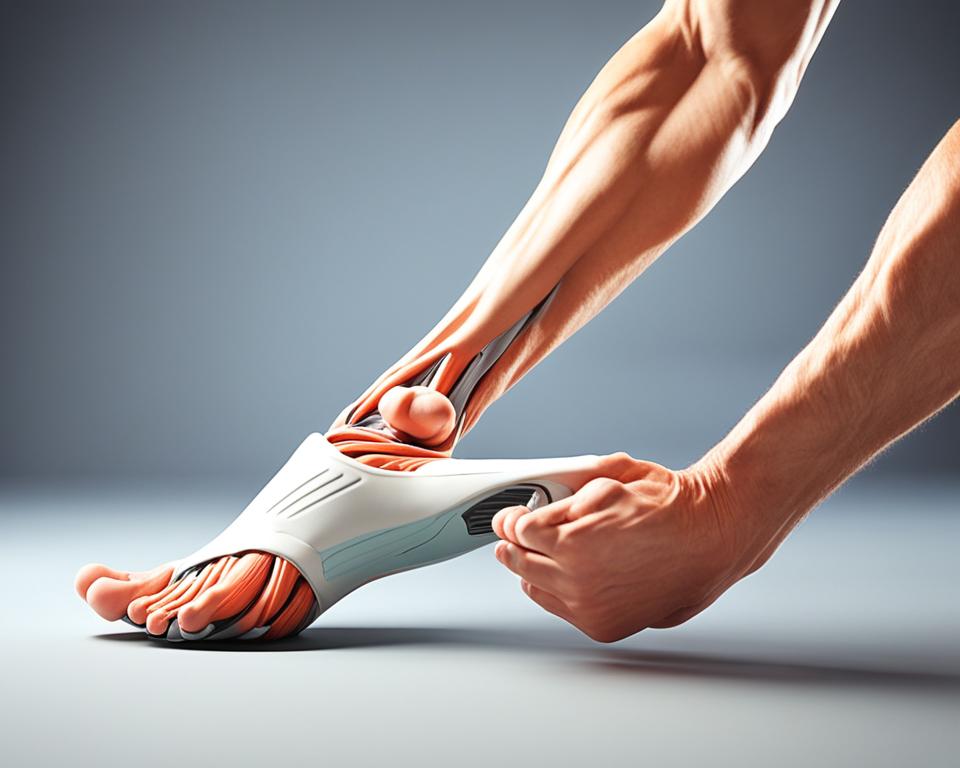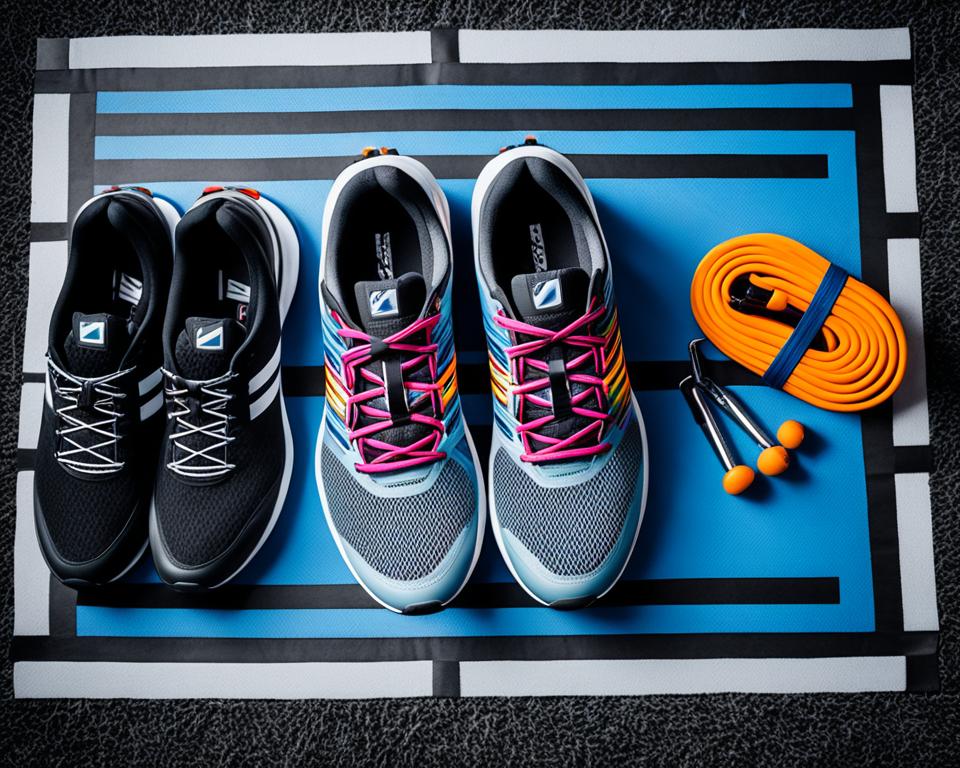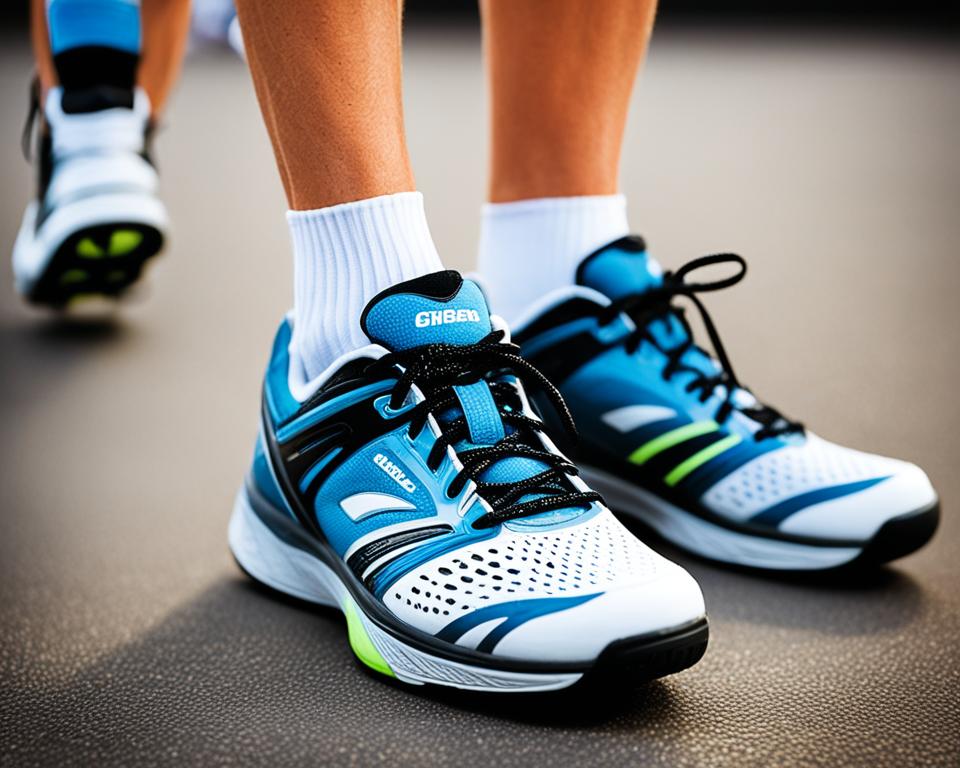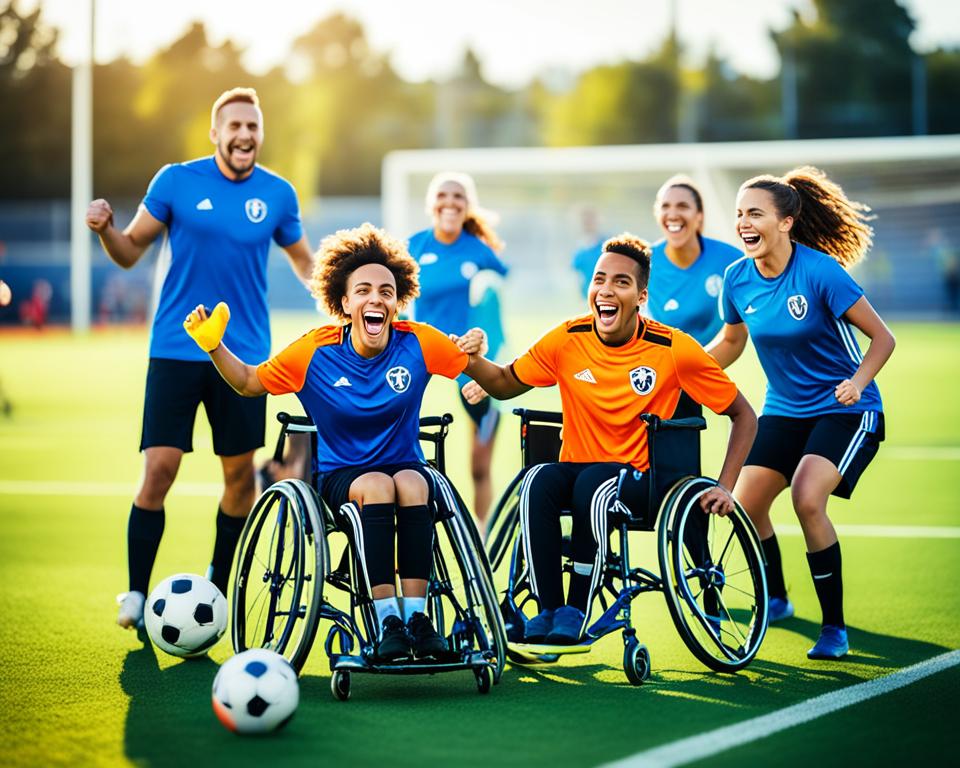Feet play a pivotal role in athletic performance, serving as the foundation for power, stability, and balance during various sports and physical activities. This comprehensive guide delves into the significance of foot health and care for athletes and sports enthusiasts, exploring the role of feet in enhancing athletic footwear, foot health, and overall sports performance.
From understanding the intricate anatomy of the feet to uncovering effective strategies for foot exercises, foot strength training, and foot flexibility, this article aims to empower readers with the knowledge and tools necessary to maximize their athletic potential while safeguarding their feet from injury. By addressing the multifaceted aspects of “feet sport,” this guide will help you navigate the journey to improved performance and protection, ultimately leading to a more successful and fulfilling sports experience.
Read more interesting information at ::lansdowne-moody
Importance of Foot Health in Sports
Feet are the foundation of an athlete’s performance, providing the necessary stability, balance, and power for a wide range of physical activities. Maintaining optimal foot health is crucial for sports enthusiasts, as it can directly impact their athletic abilities and overall well-being. This section explores the pivotal role of feet in athletic performance and the common foot injuries that athletes may encounter, while also outlining effective prevention strategies to keep feet in peak condition.
Role of Feet in Athletic Performance
The feet are responsible for absorbing the impact of physical activity, transferring force from the ground to the rest of the body, and enabling agile movements. Healthy, well-functioning feet are essential for maintaining proper balance, generating explosive power, and executing complex sports-specific skills. Ensuring that the feet are strong, flexible, and well-supported can significantly enhance an athlete’s speed, agility, and overall athletic performance.
Common Foot Injuries and Prevention
Athletes are susceptible to a variety of foot-related injuries, such as sprains, plantar fasciitis, and stress fractures. These conditions can be caused by factors like overuse, improper footwear, sudden changes in training intensity, or underlying biomechanical issues. To mitigate the risk of these foot injuries, athletes should incorporate regular warm-up and cool-down routines, engage in foot-strengthening exercises, and select appropriate athletic footwear that provides adequate foot care and support.
Understanding Foot Anatomy
To effectively address foot-related issues in sports, it is essential to have a basic understanding of the complex foot anatomy. The foot is a remarkable structure composed of a network of bones, muscles, and tendons that work together to provide stability, flexibility, and power during various physical activities.
Structure and Function of Foot Bones
The human foot is made up of 26 bones, including the tarsal, metatarsal, and phalangeal bones. These bones form the foundation of the foot, providing the necessary structure for weight-bearing, shock absorption, and propulsion during movement. Understanding the intricate arrangement and biomechanics of these bones can help athletes and healthcare professionals identify and address any underlying imbalances or weaknesses that may contribute to foot-related problems.
Muscles and Tendons of the Foot
The foot is home to a complex network of muscles and tendons that work in harmony to support various foot movements and functions. These include the intrinsic and extrinsic foot muscles, as well as the Achilles tendon and other connective tissues that connect the muscles to the bones. By understanding the role of these muscular and tendinous structures, athletes can develop targeted exercises and rehabilitation strategies to improve foot strength, flexibility, and overall function.
Proper Footwear for Athletic Activities
Choosing the right athletic footwear is critical for maintaining foot health and preventing injuries during sports activities. The appropriate athletic footwear can provide the necessary support, cushioning, and traction to help athletes perform at their best while minimizing the risk of foot-related problems.
Selecting the Right Shoes for Your Sport
When it comes to shoe selection, one size does not fit all. The type of sport, the terrain, and individual foot characteristics should all be taken into account. For example, runners may require a shoe with more cushioning and stability, while court sports like basketball may call for a shoe with enhanced lateral support and flexibility. Hikers, on the other hand, may benefit from a shoe with a more rugged sole and ankle support. By carefully considering the specific needs of the sport and your feet, you can ensure that your shoe selection provides the optimal fit and support for your athletic activities.
Importance of Fit and Support
Along with selecting the right type of shoe, the fit and support of the footwear are equally important factors. A properly fitted shoe that provides adequate arch support, heel cushioning, and toe box space can significantly impact an athlete’s comfort, performance, and injury risk. Inadequate fit or insufficient support can lead to issues such as blisters, joint pain, and even stress fractures. By investing in high-quality, well-fitting athletic footwear, athletes can ensure their feet are properly protected and supported, allowing them to perform at their peak with reduced risk of foot-related injuries.
Feet Sport Exercises and Stretches
Incorporating targeted exercises and stretches into one’s fitness routine can greatly benefit foot health and athletic performance. From strengthening the feet and ankles to improving overall foot flexibility and range of motion, these specialized activities can unlock significant gains in balance, stability, and power – all of which are crucial for optimal sports performance.
Strengthening Exercises for Feet and Ankles
To build a strong foundation for athletic endeavors, it’s essential to engage in feet sport exercises that target the intrinsic and extrinsic muscles of the feet and ankles. Exercises such as toe curls, heel raises, and balance board drills can help improve foot strength training and enhance the stability of the lower extremities. By consistently incorporating these feet sport exercises into your workout routine, you can develop the necessary foot and ankle strength to support dynamic movements and explosive power.
Flexibility and Range of Motion Drills
Alongside foot strength training, maintaining optimal foot flexibility and foot range of motion is crucial for injury prevention and overall athletic performance. Dedicating time to dynamic stretches, joint mobilizations, and self-myofascial release techniques can help improve the mobility of the feet and ankles, enabling greater range of motion and reducing the risk of restrictive tightness or imbalances. By integrating these feet sport exercises into your routine, you can ensure your feet and lower extremities are primed for the demands of your chosen sport.
Foot Care and Injury Prevention
Maintaining proper foot care and implementing effective injury prevention strategies are crucial for athletes to perform at their peak. A key aspect of this is incorporating comprehensive warm-up and cool-down routines into one’s fitness regimen.
Warm-up and Cool-down Routines
Proper warm-up exercises help prepare the feet and lower extremities for physical activity, increasing blood flow, flexibility, and muscle readiness. This can include dynamic stretches, gentle foot and ankle mobilizations, and low-impact movements that target the key muscle groups involved in one’s chosen sport. Conversely, cool-down routines aid in recovery, promoting the removal of lactic acid and reducing the risk of foot injuries. Incorporating a combination of light cardio, static stretches, and self-massage techniques can help athletes protect their feet and ensure a smooth transition from activity to rest.
Recognizing and Treating Common Foot Injuries
Despite best efforts, foot injuries can still occur during athletic activities. It is essential for athletes to be able to recognize the signs and symptoms of common foot ailments, such as sprains, plantar fasciitis, and stress fractures. Prompt recognition and appropriate treatment can significantly improve the chances of a full and speedy recovery. This may involve rest, ice, compression, and elevation (RICE), as well as targeted rehabilitation exercises and, in some cases, the guidance of a healthcare professional.
Athlete’s Foot and Foot Hygiene
Athlete’s foot, a common fungal infection that can affect the feet, is a prevalent concern for athletes and sports enthusiasts. This condition, also known as tinea pedis, thrives in warm, moist environments, making it a particular challenge for those engaged in physical activities. The causes of athlete’s foot can range from poor foot hygiene to shared showers or locker rooms, where the fungus can spread easily.
One of the primary symptoms of athlete’s foot is itching, stinging, or burning sensations between the toes or on the soles of the feet. In some cases, the affected areas may appear red, scaly, or even develop blisters. If left untreated, the infection can worsen and potentially spread to other parts of the body, leading to additional discomfort and complications.
To prevent and effectively manage athlete’s foot, maintaining proper foot hygiene is crucial. This includes regularly washing the feet with soap and water, thoroughly drying them, and applying antifungal powders or creams to keep the skin dry and inhibit the growth of the fungus. It is also essential to avoid sharing towels, socks, or other personal items, as this can contribute to the spread of the infection.
For athletes, incorporating these foot hygiene practices into their daily routine can significantly reduce the risk of developing athlete’s foot and ensure the health and comfort of their feet during sports and physical activities. By addressing this common condition proactively, athletes can focus on their performance and avoid the disruptive effects of this fungal infection.
Foot Massage Techniques
Incorporating foot massage into an athlete’s recovery regimen can be a powerful tool for both relaxation and injury rehabilitation. By understanding the various foot massage techniques, athletes can harness the benefits of this holistic approach to enhance their overall foot health and lower extremity function.
Self-Massage for Relaxation and Recovery
One of the most accessible and convenient ways for athletes to experience the relaxation and recovery benefits of foot massage is through self-massage. Simple techniques, such as using the thumbs to apply gentle pressure along the soles of the feet, can help promote blood circulation, reduce muscle tension, and alleviate discomfort. Additionally, incorporating foot stretching and range of motion exercises during self-massage can further enhance foot flexibility and mobility.
Professional Massage for Injury Rehabilitation
For more targeted injury rehabilitation, athletes may benefit from seeking the expertise of a professional massage therapist. These specialists can apply various foot massage techniques, such as deep tissue work, trigger point therapy, and sports massage, to address specific foot and ankle injuries. By incorporating professional massage into their recovery plan, athletes can accelerate the healing process, improve joint range of motion, and ultimately enhance their athletic performance and injury resilience.
| Foot Massage Technique | Benefits |
|---|---|
| Self-Massage |
|
| Professional Massage |
|
Foot Strength Training for Enhanced Performance
Dedicated foot strength training can significantly enhance an athlete’s overall sports performance. By incorporating specialized exercises that target the feet and ankles, athletes can develop greater stability, agility, and power, leading to improved athletic abilities across a wide range of disciplines.
Plyometric Exercises for Explosive Power
Plyometric exercises, which involve rapid and explosive movements, can be highly effective in building foot and ankle power. These exercises, such as box jumps, squat jumps, and bounding drills, challenge the muscles and tendons to generate maximum force in a short period, resulting in enhanced foot strength training and explosive capabilities. By incorporating plyometric drills into their fitness regimen, athletes can develop the plyometrics necessary for explosive movements, ultimately translating to improved athletic performance.
Resistance Training for Foot Strength
In addition to plyometric exercises, resistance training can also be highly beneficial for building foot and ankle strength. Exercises such as calf raises, band-resisted ankle movements, and weighted foot and toe curls can target the intrinsic and extrinsic muscles of the feet, leading to greater stability, balance, and overall foot strength. By incorporating these resistance training techniques into their routine, athletes can develop the necessary foot strength to support their athletic endeavors and minimize the risk of foot-related injuries.
Foot Flexibility and Mobility
Maintaining proper foot flexibility and mobility is crucial for optimal athletic performance and injury prevention. This section outlines effective stretching routines and foam rolling techniques that can help improve the range of motion in the feet and ankles.
Stretching Routines for Improved Range of Motion
Incorporating targeted stretching exercises into your fitness regimen can significantly enhance foot flexibility and overall lower extremity function. Dedicating time to stretching the plantar fascia, Achilles tendon, and other key foot and ankle structures can help increase range of motion, reduce the risk of joint stiffness, and improve overall mobility.
Foam Rolling for Foot and Ankle Mobility
In addition to stretching, foam rolling can be an effective way to improve foot and ankle mobility. By applying gentle pressure and rolling the feet and ankles over a foam roller, you can help release muscle tension, increase range of motion, and promote better overall lower extremity function. Regularly incorporating foam rolling into your recovery routine can be a valuable tool for maintaining optimal foot flexibility and mobility.
| Stretching Exercises | Foam Rolling Techniques |
|---|---|
|
|

Choosing the Right Athletic Footwear
Selecting the appropriate athletic footwear is essential for maintaining foot health and supporting optimal sports performance. When choosing shoes for different sports, several key factors must be considered to ensure a perfect fit and the necessary support.
Considerations for Different Sports
The type of athletic activity, the terrain, and individual foot characteristics all play a vital role in determining the ideal shoe selection. For example, runners require shoes with ample cushioning and stability to absorb the impact of their sport, while basketball players need shoes with excellent traction and lateral support to facilitate quick changes in direction. Hikers, on the other hand, may prioritize sturdy, rugged soles and ankle support to navigate uneven terrain safely.
It’s important to consult with a knowledgeable sales associate or a podiatrist to ensure the selected shoes align with the specific demands of your chosen sport and provide the necessary comfort and protection for your feet.
Replacing Worn-Out Shoes
In addition to selecting the appropriate athletic footwear, it’s crucial to regularly replace worn-out shoes. Over time, the cushioning, support, and stability of shoes can deteriorate, compromising their ability to absorb shock and provide the necessary protection for your feet. As a general rule, it’s recommended to replace athletic shoes every 300-500 miles or every six to twelve months, depending on the frequency and intensity of use.
By investing in high-quality, well-fitting athletic footwear and replacing them at the appropriate intervals, you can ensure your feet remain comfortable, supported, and protected, allowing you to perform at your best during your chosen sports activities.
Foot Health and Injury Prevention Strategies
Maintaining overall foot health and implementing effective injury prevention strategies are crucial for athletes to perform at their best. This section reinforces the importance of comprehensive warm-up and cool-down routines, which can help prepare the feet and lower extremities for physical activity and aid in recovery.
Warm-up and Cool-down Routines
Proper warm-up and cool-down exercises are essential for foot health and injury prevention. Before engaging in any athletic activity, athletes should perform a thorough warm-up that includes dynamic stretches and light exercises targeting the feet and ankles. This helps increase blood flow, lubricate the joints, and prepare the muscles for the upcoming physical demands. Similarly, a well-designed cool-down routine, featuring static stretches and gentle movements, can promote recovery and reduce the risk of foot injuries.
Recognizing and Treating Common Foot Injuries
Recognizing and addressing common foot injuries quickly is crucial for effective rehabilitation and preventing long-term complications. Some of the most prevalent foot injuries among athletes include sprains, plantar fasciitis, and stress fractures. By learning to identify the symptoms and seeking prompt medical attention, athletes can receive the appropriate treatment and regain their foot health and functionality, ultimately returning to their sports with reduced risk of reinjury.
Foot Exercises for Injury Rehabilitation
In the event of a foot or ankle injury, specific exercises can play a vital role in the rehabilitation process. This section outlines a range of strengthening exercises and flexibility/range of motion drills that can help athletes regain foot and ankle function, improve stability, and prevent future injuries. By incorporating these targeted exercises into their rehabilitation program, athletes can accelerate their recovery and make a safe return to their respective sports.
Strengthening Exercises for Foot and Ankle Recovery
Rebuilding foot and ankle strength is crucial for injury rehabilitation. Some effective exercises include:
- Heel raises: Stand with feet shoulder-width apart and raise up onto your toes, lifting your heels off the ground. Slowly lower back down, focusing on engaging the foot and ankle muscles.
- Towel scrunches: Place a towel on the floor and use your toes to scrunch and pull the towel towards your body, working the intrinsic foot muscles.
- Resistance band exercises: Loop a resistance band around your feet and perform dorsiflexion, plantarflexion, inversion, and eversion movements to target the foot and ankle musculature.
Flexibility and Range of Motion Drills
Improving foot and ankle flexibility and range of motion can also aid in the rehabilitation process. Try the following exercises:
- Ankle circles: Slowly circle your ankles in both clockwise and counterclockwise directions, focusing on full range of motion.
- Toe stretches: Gently pull your toes back towards your shin, feeling a stretch in the front of the foot and ankle.
- Foam rolling: Use a foam roller to massage and improve mobility in the foot and ankle region.
By incorporating these foot exercises into their injury rehabilitation program, athletes can effectively regain foot and ankle function, enhance stability, and prevent future injuries, ultimately facilitating a safe and successful return to their respective sports.

Feet Sport: Enhancing Foot Strength and Power
Developing exceptional foot strength and power is a crucial aspect of enhancing overall athletic performance. By incorporating targeted feet sport exercises into their training regimen, athletes can unlock new levels of stability, agility, and explosive power, translating to improved results across a wide range of sports.
Plyometric Exercises for Explosive Foot Power
Plyometric exercises, also known as jump training, are a highly effective way to build foot power and explosiveness. These dynamic movements involve the rapid lengthening and shortening of the muscle-tendon units, eliciting a potent stretch-shortening cycle that generates immense foot power. Exercises like box jumps, depth drops, and single-leg hops challenge the feet sport muscles to produce rapid, forceful contractions, leading to enhanced foot power and improved athletic performance.
Resistance Training for Foot Strength
Complementing plyometric training, resistance training plays a crucial role in developing foot strength. By incorporating exercises that target the intrinsic and extrinsic foot muscles, athletes can build the necessary foot strength to support high-intensity movements and withstand the demands of their respective sports. Exercises like calf raises, band-resisted foot dorsiflexion, and weighted toe curls are effective in strengthening the feet sport and improving overall foot function.
By seamlessly integrating these feet sport training methods into their overall fitness regimen, athletes can unlock the full potential of their lower extremities, leading to enhanced foot strength, foot power, and ultimately, improved sports performance.
Foot Care and Hygiene for Athletes
Proper foot care and hygiene are essential for athletes to maintain overall foot health and prevent the development of conditions like athlete’s foot. This section provides guidance on effectively preventing and treating this common fungal infection, as well as outlining proper foot hygiene practices to keep the feet clean, dry, and healthy, reducing the risk of various foot-related problems.
Preventing and Treating Athlete’s Foot
Athlete’s foot, also known as tinea pedis, is a highly contagious fungal infection that can affect the skin of the feet, particularly between the toes. This condition is prevalent among athletes and sports enthusiasts due to the warm, moist environments commonly found in locker rooms, showers, and shared training facilities. To prevent and effectively treat athlete’s foot, athletes should:
- Maintain good foot hygiene by washing and thoroughly drying their feet, especially between the toes, on a regular basis.
- Use antifungal powders or creams as directed to keep the feet dry and discourage fungal growth.
- Wear breathable, moisture-wicking socks and change them frequently during and after physical activities.
- Avoid walking barefoot in shared areas and always wear appropriate footwear in communal showers or locker rooms.
- Seek prompt medical attention if symptoms such as itching, redness, or scaling persist, as prescription antifungal medications may be required.
Proper Foot Hygiene Practices
In addition to preventing and treating athlete’s foot, maintaining proper foot hygiene is crucial for athletes to keep their feet healthy and reduce the risk of other foot-related issues. Recommended foot hygiene practices include:
- Washing the feet daily with mild soap and warm water, ensuring to clean between the toes.
- Thoroughly drying the feet, especially the areas between the toes, to prevent moisture buildup.
- Applying antifungal powders or creams to keep the feet dry and prevent fungal growth.
- Regularly inspecting the feet for any signs of irritation, cuts, or other issues that may require attention.
- Wearing properly fitted, breathable athletic socks and replacing them when they become worn or damp.
By prioritizing foot care and hygiene, athletes can maintain healthy, comfortable feet and reduce their susceptibility to infections and other foot-related problems, ultimately enhancing their overall sports performance and well-being.
Conclusion
In conclusion, prioritizing feet sport and incorporating specialized practices into one’s fitness regimen can significantly enhance athletic performance and protect against foot-related injuries. By understanding foot anatomy, selecting appropriate athletic footwear, engaging in targeted exercises and stretches, and maintaining proper foot care and hygiene, athletes can maximize their potential and enjoy a safer, more successful sports experience.
This comprehensive guide has provided a wealth of information and practical strategies to help readers optimize their feet sport and achieve their athletic goals. From exploring the role of feet in performance to addressing common foot injuries and offering effective prevention methods, the content covers the essential aspects of maintaining foot health for athletes and sports enthusiasts alike.
By incorporating the recommended practices and techniques into their fitness routines, readers can expect to see improvements in their stability, agility, power, and overall athletic performance. Additionally, the focus on injury prevention strategies can help reduce the risk of setbacks and ensure a more sustainable and enjoyable sports journey.



